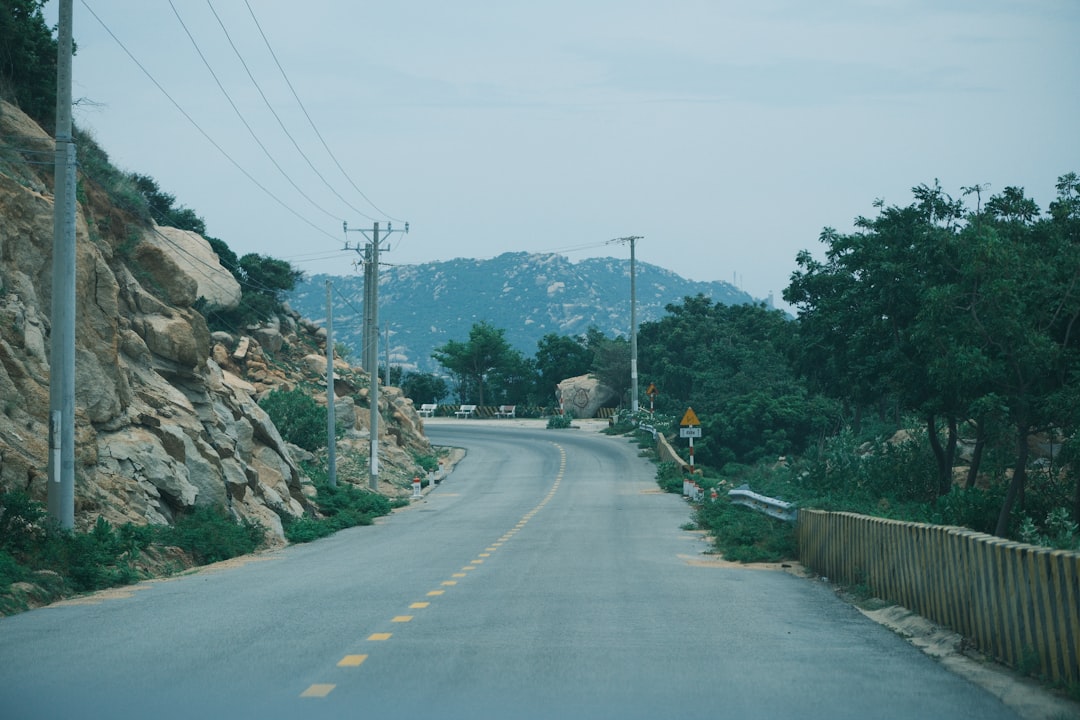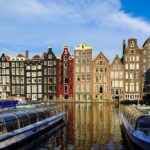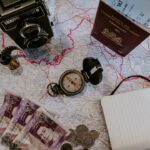Why the Road to Hana is Maui’s Most Legendary Adventure
The road to hana stops are what make this 64-mile drive one of the most spectacular journeys in the world. Here are the top stops you absolutely shouldn’t miss:
| Stop Category | Must-See Locations | Why Visit |
|---|---|---|
| Early Stops | Paia Town, Ho’okipa Beach, Twin Falls | Last supplies, world-class surfing, first waterfalls |
| Mid-Journey | Ke’anae Peninsula, Aunty Sandy’s Banana Bread, Upper Waikani Falls | Dramatic coastline, local treats, stunning waterfalls |
| Main Attractions | Waiʻānapanapa State Park, Hana Town | Black sand beach, lunch and culture |
| Beyond Hana | Wailua Falls, Pools of ‘Ohe’o, Pīpīwai Trail | Iconic waterfall, sacred pools, bamboo forest hike |
If I had to describe Maui’s Road to Hana in one word, it would be “all-encompassing.” This isn’t just a drive—it’s a journey through lush rainforests, past cascading waterfalls, along dramatic volcanic coastlines, and into the heart of what makes Hawaii so magical.
The Road to Hana is officially a 64-mile stretch of highway that winds along Maui’s northeastern coast. But those 64 miles contain over 620 hairpin curves and 59 one-lane bridges. It’s not about rushing to a destination. It’s about the journey itself.
Most travelers spend 10 to 12 hours making the round trip, and for good reason. Every turn reveals something new: a hidden waterfall, a black sand beach, a roadside stand selling fresh banana bread, or a viewpoint that makes you pull over just to take it all in.
But here’s the challenge: with so many potential stops, how do you know which ones are truly worth your time? Not all stops are created equal, and trying to see everything will leave you exhausted and driving back in the dark—something you definitely want to avoid.
I’m Ramy Saber, founder of GoTravelHunt, and I’ve helped countless travelers plan stress-free, unforgettable trips to destinations like Maui. My goal is to give you a curated list of the best road to hana stops so you can maximize your adventure without the overwhelm.
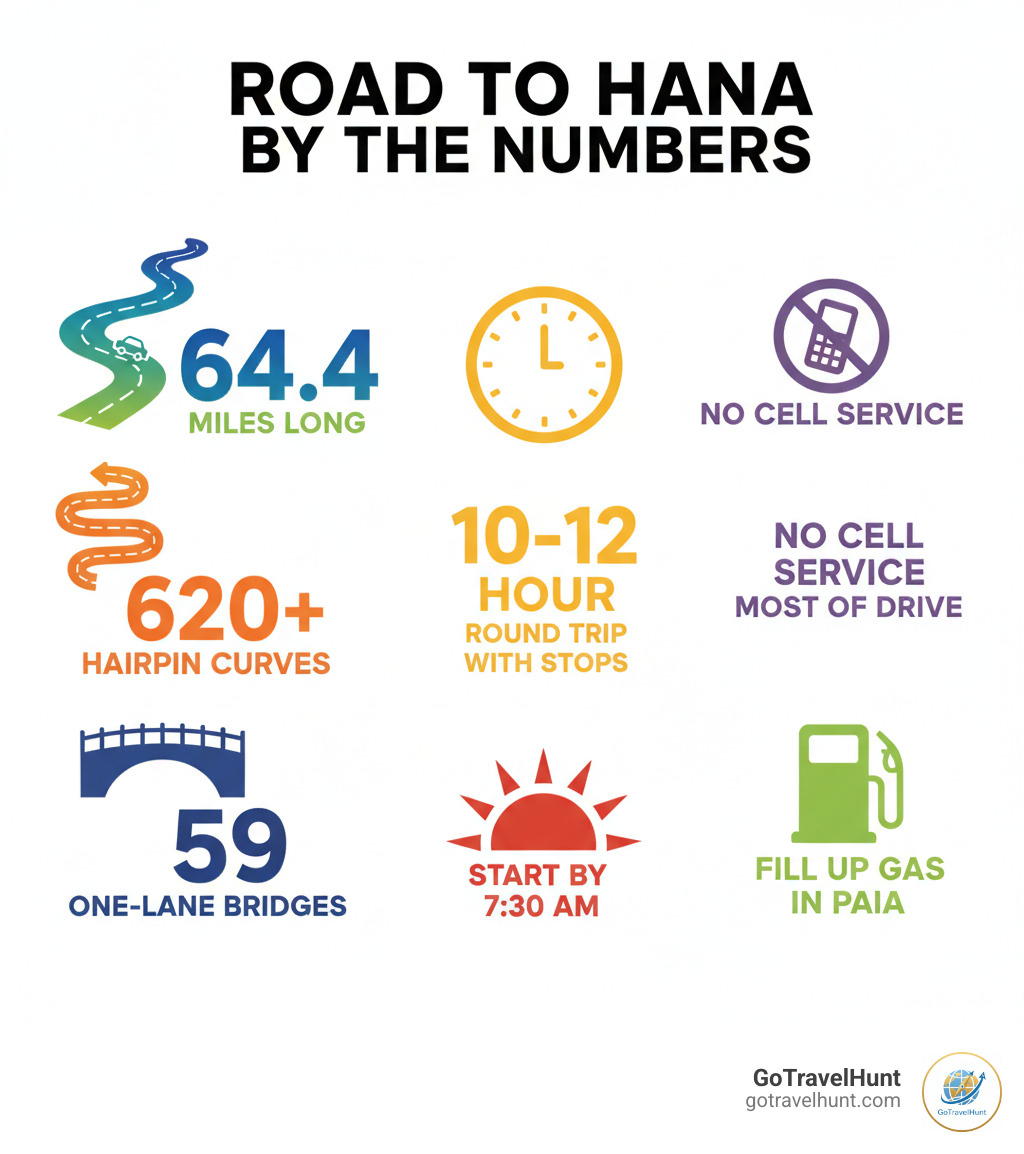
Essential Prep: What to Know Before You Drive the Road to Hana
Think of the Road to Hana as a full-day adventure that rewards those who plan ahead. I’ve learned that a little preparation goes a long way in turning this drive from potentially stressful into absolutely spectacular. Let me walk you through the essentials that will set you up for success.
Navigation, Gas, and Timing
Here’s the reality: those 64.4 miles with 59 one-lane bridges and over 600 hairpin turns aren’t something you can rush through. The drive itself takes about 5 hours without stopping—and who wants to do that? When you factor in all the incredible road to hana stops you’ll want to explore, you’re looking at a solid 10 to 12-hour day.
Starting early is non-negotiable. I recommend leaving Paia by 7:30 AM at the latest. This isn’t just about having enough daylight to get back safely (though that’s crucial). It’s also about beating the crowds to those magical swimming holes and waterfalls.
The other major consideration is that cell service is virtually nonexistent for most of the drive. Your GPS won’t work unless you download offline maps before you go. Trust me on this—I’ve seen too many travelers stranded without navigation.
Fill up your gas tank in Paia. This is your last chance for reasonably priced fuel. Gas stations beyond this point are limited, and the ones in Hana charge significantly more. A full tank means one less thing to worry about while you’re soaking in the scenery.
Recommended Guides and Resources
The Road to Hana is beautiful on its own, but understanding the stories behind what you’re seeing makes it truly unforgettable. That’s where self-guided audio tours come in.
Apps with GPS-triggered commentary are absolute game-changers for this drive. They’ll share fascinating Hawaiian history, cultural insights, and legends while pointing out the best road to hana stops along the way. These typically cost around $7-$10, and they’re worth every penny for the depth they add to your journey.
If you’d rather not handle the driving yourself—and honestly, those hairpin turns can be intense—guided van tours are a fantastic option. You’ll have a local expert navigating the challenging road while sharing insider knowledge, often with lunch included. It’s a relaxed way to experience everything without the stress.
At GoTravelHunt, we’re all about making travel planning easy, stress-free, and affordable. Using trusted travel resources and guides ensures you get the most out of this legendary drive without missing the highlights.
Packing, Food, and Supplies
Let me be straight with you: food options along the Road to Hana are unpredictable. Some spots close by 3 or 4 PM, and availability varies. The smart move is packing your own snacks, a picnic lunch, and plenty of water. If you’re stocking up in Paia, Mana Foods is a local favorite.
Bring cash—specifically small bills. Many roadside farm stands and vendors are cash-only, and you’ll want ones and fives for easy transactions. There’s nothing worse than finding the perfect banana bread stand and realizing you only have a twenty.
Beyond food, here’s what you’ll want to pack: a swimsuit and towel for those refreshing waterfall dips, reef-safe sunscreen to protect both your skin and Maui’s coral reefs, and bug spray because the rainforest has mosquitoes. A rain jacket is essential since weather can shift from sunny to rainy in minutes. Sturdy shoes will make hiking trails much more comfortable, especially if they’re muddy.
Don’t forget motion sickness medicine if anyone in your group is prone to car sickness—those curves are no joke. I also recommend hand sanitizer since public restrooms along the route may not always have soap.
Traveling with kids? These essentials become even more important. Keeping everyone well-fed and comfortable makes all the difference in how much your family enjoys the day. For more ideas on traveling smart with your little ones, check out our tips for family travel.
The Ultimate List of Must-See Road to Hana Stops
With countless potential stops dotting this legendary highway, trying to see everything in one day is simply impossible—and honestly, you’d drive yourself crazy attempting it. That’s why we’ve carefully curated this list to balance the iconic landmarks everyone talks about, the hidden natural wonders that take your breath away, and those special local treats that make the journey truly authentic. We’ll guide you through the best road to hana stops by mile marker, so you can craft an itinerary that’s perfect for you.
Early Gems & Scenic Views (Mile Markers 0-17)
Our adventure begins in Paia Town (MM 0), a charming, laid-back surf town that feels like stepping back into old Hawaii. This is your absolute last chance to fuel up your car and your body. Grab that morning coffee, pick up breakfast, or pack a proper picnic lunch for later. The restaurants here are genuinely tasty, and the people-watching is pretty entertaining too. We can find free public car parking in Paia and stock up on snacks at the beloved Mana Foods, a local institution.
By Ho’okipa Beach Park (MM 9), we’re already witnessing world-class action. From the bluff above, this is one of the best spots to watch incredible surfing in Maui. In winter, the waves can reach massive heights, attracting professional windsurfers and kiteboarders who come specifically for the consistent, powerful winds. We often spot Hawaiian Green Sea turtles lounging on the sand here too, which never gets old. Just a heads up—unless you’re an experienced surfer with local knowledge, this is strictly a watch-from-the-shore kind of spot. Ho’okipa Beach Park is for experts only.
Twin Falls (MM 2) marks our first accessible waterfall stop, and it sets the tone beautifully. For a $10 entry fee (for non-residents), you’ll find picturesque cascades and a generous swimming area. We recommend sticking to the lower, closest falls to save time and energy for what’s ahead. Always be cautious of flash floods—Hawaiian weather can change quickly. There’s also a farm stand here selling fresh fruit and refreshing smoothies. Twin Falls is a gentle introduction to the magic ahead.
At Garden of Eden Arboretum (MM 10.5), twenty-six acres of tropical paradise await. Various tropical flowers bloom year-round, rare trees tower overhead, and the ocean views are absolutely breathtaking. Plan for about 30 minutes here. Here’s a fun bit of movie trivia: one viewpoint overlooks Keopuka Rock, which appeared in the opening scene of ‘Jurassic Park’! The entry fee is $20 per adult, and it’s worth every penny. The Garden of Eden Arboretum feels like nature’s art gallery.
Keep your eyes peeled around MM 7 for the stunning Rainbow Eucalyptus trees. These remarkable trees look like someone painted them with vibrant stripes of red, yellow, and green. It’s nature showing off, pure and simple. We can find some beautiful specimens near the Garden of Eden. Eucalyptus Rainbow Trees are one of those “stop the car” moments.
Ke’anae Arboretum (MM 16) offers another peaceful, free stop. The Ke’anae Arboretum showcases various tropical tree species, a small bamboo grove, and traditional taro ponds. It’s a lovely spot for a 30-minute stroll where we can stretch our legs and breathe in that fresh rainforest air.
Just beyond, Ke’anae Peninsula (MM 16) requires a short detour off the main road, but trust us—it’s worth it. The Ke’anae Peninsula delivers dramatic views of massive waves crashing against the rugged, black lava rock coastline. We can also see traditional taro fields here, still being cultivated as they have been for centuries. There are restrooms near the parking area. The peninsula carries a poignant history—it was devastated by a tsunami in 1946, though remarkably, its historic stone church built in 1856 survived.
At the end of the Ke’anae Peninsula, Aunty Sandy’s Banana Bread (MM 17) has achieved legendary status, and for good reason. Aunty Sandy’s Banana Bread serves up incredibly moist, flavorful loaves that are still warm from the oven. They also sell smoothies and other treats. This is absolutely a must-stop for an authentic local taste that’ll fuel you for the next stretch.
Waterfalls, Food & Black Sand: The Heart of the Journey (MM 17-34)
As we venture deeper into the Road to Hana, the scenery becomes even more spectacular. This is where the journey truly reveals its magic.
Upper Waikani Falls (Three Bears Falls) (MM 19) is one of our personal favorite waterfall stops. The name “Three Bears Falls” comes from the three parallel cascades that flow side by side during heavy rain. It’s a quick stop, but we absolutely love how close you can get to the falls for fantastic photos. Get directions to mile marker 19 and prepare for some Instagram-worthy moments.
Pua’a Ka’a State Wayside Park (MM 22) is an excellent spot for a proper break. It offers clean restrooms (always appreciated!), a nice picnic area, and accessible waterfalls where you can take a refreshing dip. Pau’a Ka’a Falls provides that perfect mid-journey reset.
Despite its name and mile marker, the Halfway to Hana food stand (MM 17) is typically found around the actual halfway point of the drive from Paia to Hana. It’s become famous for its banana bread and other snacks, making it a popular place to refuel. Halfway to Hana Stand is where you’ll see plenty of other travelers doing exactly what you’re doing.
What better way to treat ourselves than with delicious vegan ice cream? Coconut Glen’s (MM 27) is a quirky, completely off-grid spot serving unique tropical flavors like coconut, passion fruit, and mango—all made with Maui-grown coconuts. Coconut Glens is pure tropical bliss in a cup.
Hana Lava Tube (Ka’eleku Caverns) (MM 31) offers something completely different. This eerie underground cave was carved out by flowing lava almost 1,000 years ago. It’s surprisingly large, and exploring it genuinely feels like stepping onto another planet. Admission is $15 per person, and the self-guided tour takes about 30-45 minutes. Hana Lava Tubes is a fascinating geological wonder.
Waiʻānapanapa State Park (MM 32) is arguably the crown jewel of all road to hana stops. Waiʻānapanapa State Park boasts a stunning black sand beach (Honokalani Beach), mysterious sea caves, ancient lava tubes, and a scenic coastal hiking trail. The contrast between the jet-black sand, lush green cliffs, and turquoise water is absolutely breathtaking.
Due to its well-deserved popularity, advance reservations are required for Waiʻānapanapa State Park and must be made online. These reservations sell out quickly, sometimes weeks in advance, so plan ahead. There’s a fee of $5 per person plus $10 per vehicle for non-residents. We highly recommend carving out at least an hour here—it’s one of those places that stays with you long after you leave.
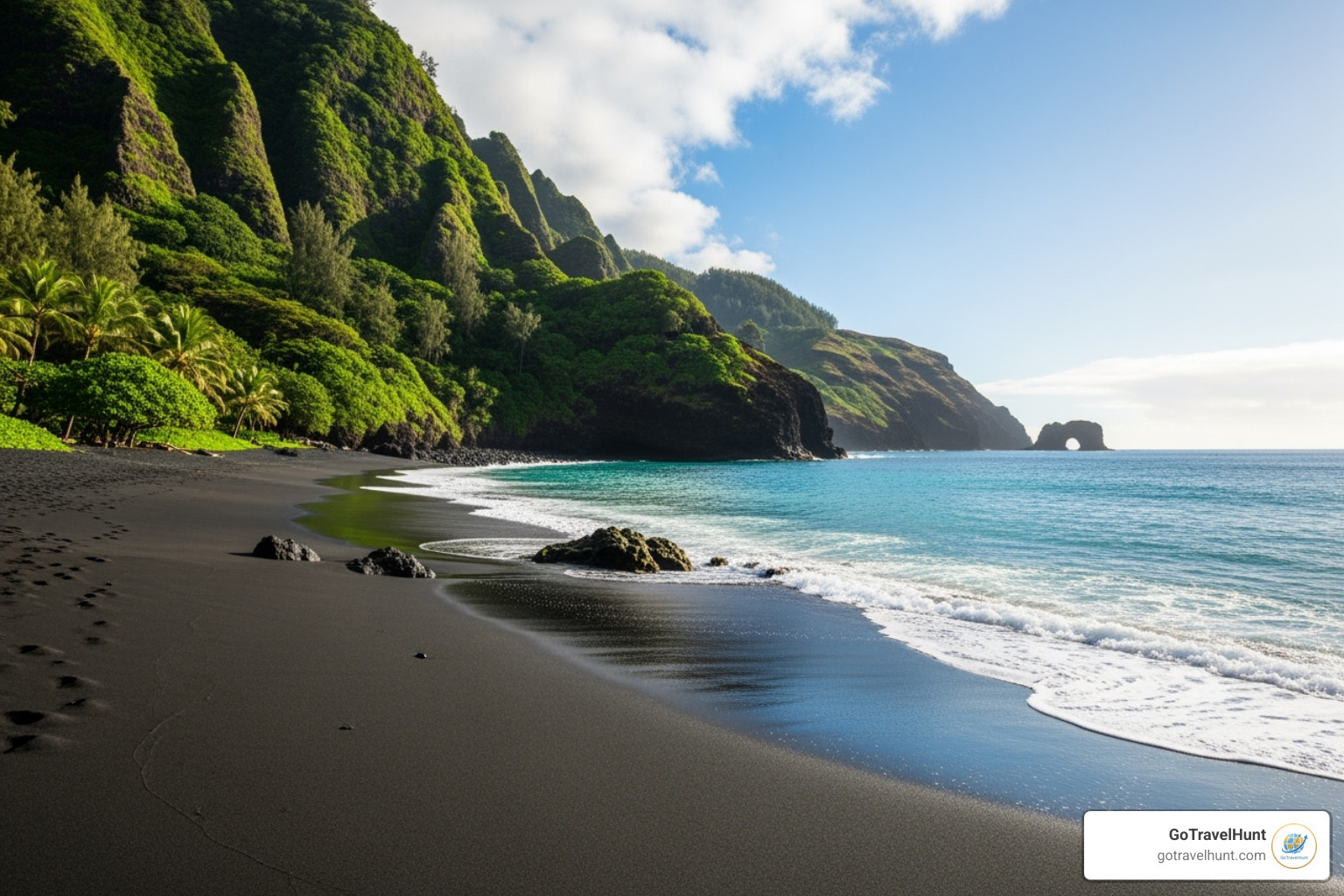
Finally, we reach Hana Town (MM 34)—the destination itself! Hana is wonderfully low-key and small, a perfect place to stretch our legs and soak in the local vibe. It has a handful of restaurants, a food truck park, and historic churches worth seeing. If you happen to visit on a Friday, the Hana Farmers Market runs from 3:00 PM to 4:30 PM.
For meals, the food trucks are where it’s at. Kilo’s Kitchen serves excellent Maui-raised beef burgers. Thai Food by Pranee offers authentic Thai cuisine when it’s open, and Ae’s Thai Kitchen makes an outstanding green curry. Another popular choice is Troy’s Plate Lunch for classic Hawaiian plate lunches. We can also visit Hasegawa General Store, a local institution that’s been serving the community for over 100 years.
Just before Hana town, Hana Farms (MM 31) operates a wonderful farm stand. Hana Farms sells locally grown produce, gift items, baked goods, and excellent coffee. Their wood-fired pizzas have quite the reputation and are large enough to share—perfect for a late lunch.
Beyond Hana: The Grand Finale (MM 42 and past Hana)
Many travelers turn back at Hana, thinking they’ve reached the end. But some of the most spectacular sights are just a bit further down the road. This is where the Road to Hana truly delivers its grand finale.
Hamoa Beach lies just past Hana town, and it’s often praised as one of Maui’s most beautiful beaches. Hamoa Beach is a gorgeous crescent of pristine, salt-and-pepper sand flanked by lush tropical greenery. The clear blue waters are ideal for swimming and snorkeling, and it’s accessed via a short walk down some stairs. This beach feels like a reward for making it this far.
Wailua Falls (MM 45) is that postcard-perfect waterfall everyone dreams about. This iconic 80-foot cascade is easily accessible and often considered one of the most picturesque on the entire drive. It’s a popular spot for photos and a refreshing dip, though always check current conditions before swimming. The accessibility makes it perfect for travelers of all ages and abilities.
The Kīpahulu District of Haleakalā National Park (MM 42) is home to some of Maui’s most stunning natural wonders. The entrance fee is $30 per vehicle, but it’s valid for three days. If you’re planning to catch sunrise at Haleakalā’s summit during your trip, this same pass covers both areas. We can learn more about the Kīpahulu District and plan accordingly.
‘Ohe’o Gulch (Pools of ‘Ohe’o) (MM 42) is popularly—though inaccurately—known as the “Seven Sacred Pools.” That name was actually a marketing creation from decades ago. ‘Ohe’o actually means “something special,” which is far more appropriate. This is a series of beautiful tiered pools and waterfalls within Haleakalā National Park. While swimming used to be permitted, the pools are frequently closed due to legitimate safety concerns like flash floods. Always check with park rangers for current conditions before planning to swim.
The Pīpīwai Trail (MM 42) is widely considered one of the best hikes on the entire island, and for good reason. Located within the Kīpahulu District, the Pīpīwai Trail is a 4-mile round-trip journey that leads us through an enchanting bamboo forest, over clear streams, and culminates at a magnificent waterfall. The bamboo forest section is particularly breathtaking—the tall stalks create a unique, almost ethereal atmosphere as sunlight filters through. Walking through it feels like entering another world entirely.
Waimoku Falls (MM 42) serves as the grand finale of the Pīpīwai Trail. This majestic 400-foot waterfall cascades powerfully down a sheer rock face. It’s an awe-inspiring sight that makes every step of the hike worthwhile. Standing before Waimoku Falls, feeling the mist on your face and hearing the thunderous roar of the water, is a truly rewarding end to both the hike and your Road to Hana adventure.
Driving Tips, Safety, and the “Back Road”
Navigating the Hana Highway is part of the adventure, but it requires respect, patience, and awareness. Following these essential tips will ensure our journey is safe and enjoyable for everyone on the road.
Road Etiquette and Safety Precautions
The Road to Hana isn’t your typical highway drive. This narrow, winding road demands our full attention and a healthy dose of aloha spirit. Let’s talk about how to be responsible drivers on this legendary route.
First and foremost, we need to drive slowly and cautiously. The speed limit hovers around 25 mph for excellent reasons—there are over 620 blind curves and countless surprises around every bend. Rushing defeats the entire purpose of this journey, which is to savor every moment.
Those 59 one-lane bridges require special etiquette. The general rule is simple: whoever is closest to the bridge or arrives first has the right of way. If there’s a line of cars approaching from the opposite direction, we should yield and wait our turn. A friendly wave or shaka sign goes a long way in spreading that aloha spirit!
Here’s something that really matters to locals: letting them pass. Residents use this road daily for work, school, and essential errands. If we notice a line of cars building up behind us, we should find a safe pull-off and let them through. It’s not just courteous—it’s respectful of the people who call this place home.
Never park illegally or block traffic. We should only stop in designated pull-offs and parking areas. Blocking driveways, narrow sections of road, or even partially obstructing traffic is dangerous and disrespectful. When we do pull over for those amazing photo ops, we need to make sure our vehicle is completely off the road.
The warning signs we’ll encounter aren’t just suggestions—heed all warning signs seriously. Whether they’re alerting us to flash floods, dangerous swimming conditions, falling rocks, or private property, these signs exist for our safety. Flash floods are particularly dangerous in Hawaii, and we should never attempt to cross flooded roads, no matter how shallow they appear.
Unfortunately, securing valuables and locking our car is essential. Car break-ins can happen at popular stops, so we should keep everything valuable out of sight and always lock our doors, even for quick waterfall visits.
A few more important points: we should stay on marked trails to protect both the delicate ecosystem and ourselves. The “Leave No Trace” principle is crucial here—pack out all trash we bring in. And remember, there’s virtually no cell service along most of the route, so in case of an emergency, we might need to drive a considerable distance before we can call for help.
The “Back Road” to Hana: Should You Complete the Loop?
Once we reach the Kīpahulu District and explore those incredible road to hana stops beyond Hana town, a decision awaits: should we continue on the Piilani Highway (Highway 31), often called the “back road,” to complete a full loop around eastern Maui?
The short answer for most travelers is no, and here’s why.
The road conditions on this “back side” are dramatically different from what we’ve experienced so far. This section can be unpaved, extremely narrow, and very rough, especially after rain. While some sedans can steer it slowly, it’s genuinely challenging and not for nervous drivers.
Here’s a critical point: many rental car contracts explicitly prohibit driving on unpaved roads. Taking the Piilani Highway could void our rental agreement entirely, leaving us responsible for any damage. We absolutely must check our rental contract before even considering this route.
The landscape does offer something unique—it shifts from lush, tropical rainforest to arid, volcanic terrain with sweeping ocean views. It’s a stark, beautiful contrast, but is it worth the risk and stress?
Before planning this route, we must check for current road closures. Portions of the back road, including critical bridges, have been closed for repairs due to damage from storms and natural events. The backside of Road to Hana is currently closed, so we can’t drive the road backwards at the moment anyway.
For most tourists—especially first-timers or those in standard rental cars—we do not recommend completing the full loop. The classic out-and-back route allows us to fully enjoy the best waterfalls, beaches, and scenic stops without added worry about road conditions, rental car violations, or getting stuck in the dark on an unfamiliar, rough road. The journey back along the same route actually feels different in the opposite direction, and we’ll likely spot things we missed the first time.
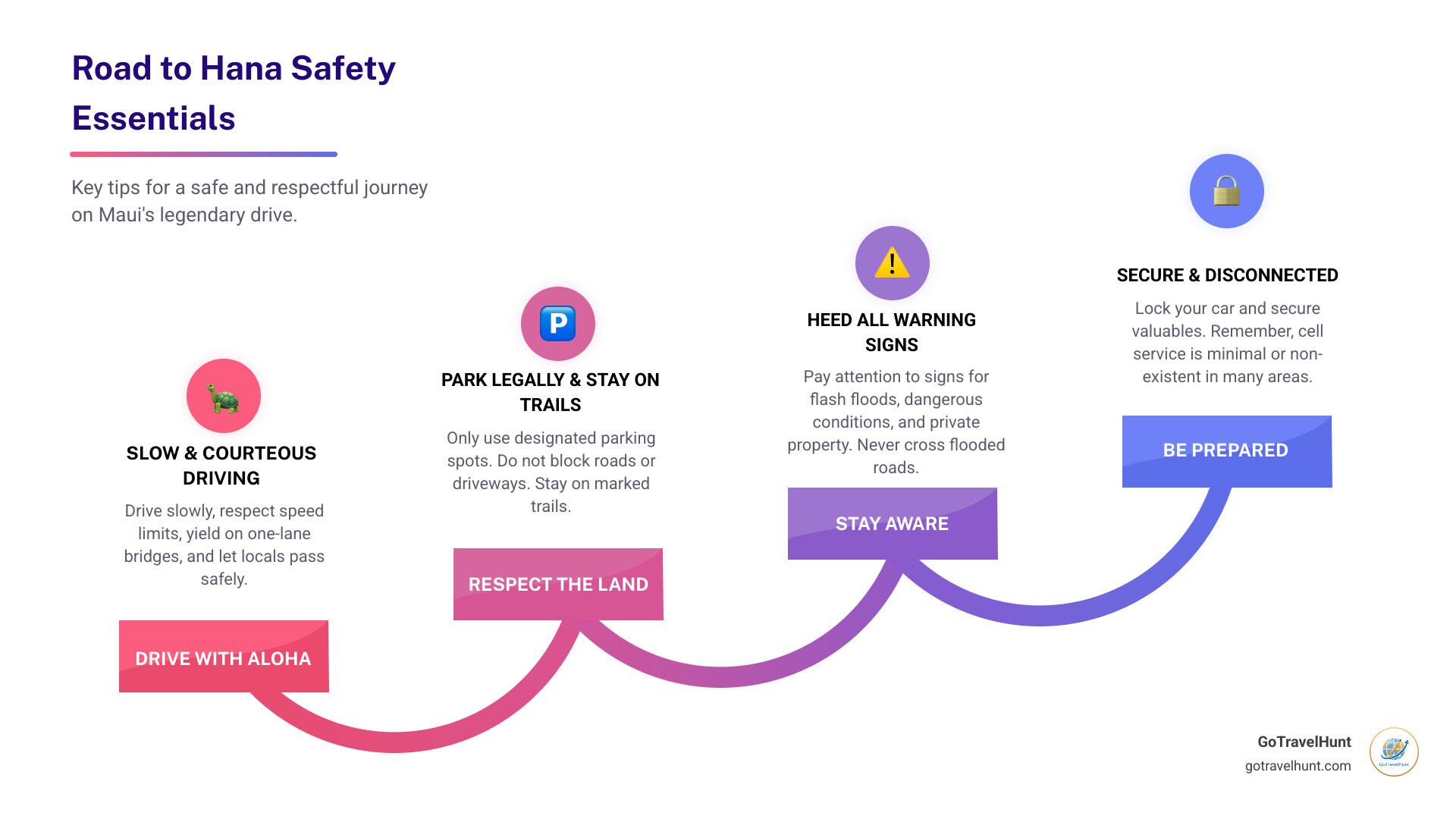
Frequently Asked Questions about Road to Hana Stops
How long does the Road to Hana really take?
Here’s the thing about the Road to Hana: technically, you could drive straight from Paia to Hana town in 2 to 3 hours without stopping. But honestly? That would be like going to a world-class buffet and only eating the bread rolls. You’d completely miss the point!
The magic of the Road to Hana isn’t the destination—it’s all those incredible road to hana stops along the way. The waterfalls where you can take a refreshing swim, the black sand beaches, the roadside banana bread stands, the bamboo forests—these are what make the journey legendary.
A full day is what you really need. We’re talking 10 to 12 hours to comfortably enjoy the drive and make several stops without feeling like you’re racing against the clock. This gives you time to actually experience each place: take a short hike, wade into a waterfall pool, snap some photos, and maybe even enjoy a picnic lunch with an ocean view.
Starting early—ideally by 7:30 AM—is absolutely key. This ensures you’ll have plenty of daylight for the drive back and helps you beat the crowds to popular spots. Plus, there’s something magical about experiencing the Road to Hana in the soft morning light.
Are reservations required for any of the Road to Hana stops?
Yes, and this is important for planning! Not every stop requires advance booking, but two major ones do need some forethought.
Waiʻānapanapa State Park—the stunning black sand beach that’s often the highlight of the journey—requires advance online reservations for a specific time slot. You can’t just show up and hope for the best. These reservations can sell out quickly, especially during peak travel seasons, so we recommend booking as soon as you’ve finalized your Maui dates. Same-day reservations aren’t permitted, so planning ahead is essential. You can book Waiʻānapanapa reservations here.
Haleakalā National Park’s Kīpahulu District (where you’ll find the Pools of ‘Ohe’o and the incredible Pīpīwai Trail) doesn’t require timed entry reservations, but there is an entrance fee of $30 per vehicle. The good news? This pass is valid for three days, so if you’re also planning to catch the sunrise at Haleakalā’s summit, you can use the same ticket. It’s a pretty good deal considering everything you get to see!
Is the Road to Hana worth it for families with kids?
Absolutely, yes! The Road to Hana can be an amazing family adventure—the kind your kids will talk about for years. Think about it: natural waterfall pools for swimming, unique black sand beaches, lava tubes to explore, and fresh fruit stands where they can try exotic tropical flavors. It’s like a real-world adventure park created by nature itself.
The key to success with kids is choosing the right stops and managing expectations. Don’t try to see everything—that’s a recipe for meltdowns. Instead, pick a handful of kid-friendly road to hana stops and give yourself plenty of time at each one. Twin Falls is perfect for younger children because the swimming area is easily accessible. The Garden of Eden Arboretum offers open spaces where kids can run around and see those incredible rainbow eucalyptus trees. And of course, Waiʻānapanapa’s black sand beach is endlessly fascinating for children (just keep a close eye on them near the waves).
Pack plenty of snacks and water—this can’t be stressed enough. A well-fed child is a happy traveler, and food options along the route can be limited or closed. Bring motion sickness medicine if your kids are prone to car sickness (those 620+ curves are no joke!).
Use the wayside parks like Pua’a Ka’a for bathroom breaks and picnic spots. These stops help break up the drive and give everyone a chance to stretch their legs.
Consider making it educational and fun by using one of the audio tour apps we mentioned earlier. Kids often love hearing the stories and legends about each stop. You could even turn it into a scavenger hunt—who can spot the first rainbow eucalyptus tree or sea turtle?
Flexibility is your friend. If the kids are getting restless or the weather turns bad, it’s okay to skip a stop or turn back earlier than planned. The Road to Hana will still be there for your next visit!
With thoughtful planning and realistic expectations, the Road to Hana creates unforgettable family memories. Want more ideas for family-friendly adventures? Check out our guide to the best family vacations spots guide for inspiration beyond Maui.
Conclusion: Making Your Hana Journey Unforgettable
The Road to Hana is so much more than a scenic drive—it’s an immersive journey into the heart of Maui’s natural splendor. Every curve in the road, every cascading waterfall, and every glimpse of the turquoise ocean reminds us why this 64-mile stretch is considered one of the world’s most legendary drives.
By starting early (ideally by 7:30 AM), being prepared with our downloaded offline maps and packed snacks, and choosing our road to hana stops wisely, we can transform what might seem like a daunting drive into the highlight of our Maui vacation. The key is remembering that this isn’t a race to a destination. It’s about savoring each moment, whether we’re standing beneath a 400-foot waterfall, dipping our toes into a sacred pool, or biting into warm banana bread from a roadside stand.
Throughout our journey, we should accept the spirit of aloha—that beautiful Hawaiian concept of love, compassion, and respect. This means driving with care and patience, yielding to locals who call this road home, respecting private property, and leaving no trace of our visit. When we approach the Road to Hana with this mindset, we’re not just tourists passing through; we’re respectful visitors connecting with the raw, untamed beauty that makes Maui so special.
At GoTravelHunt, we’re passionate about making every journey unforgettable. We believe that travel should be easy, stress-free, and affordable, and we hope this comprehensive guide helps you plan your perfect Road to Hana experience. Whether you’re watching sea turtles at Ho’okipa Beach, hiking through the magical bamboo forest on the Pīpīwai Trail, or simply pulling over to take in a view that takes your breath away, we want you to feel confident and prepared.
The Road to Hana will challenge you with its hairpin turns and one-lane bridges, reward you with its spectacular road to hana stops, and ultimately leave you with memories that last a lifetime. Ready to explore more incredible destinations? Explore more of the best vacation spots with GoTravelHunt and let us help you plan your next unforgettable adventure!

